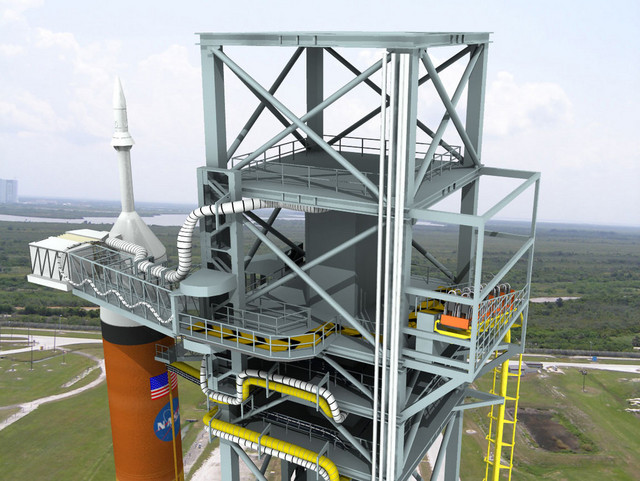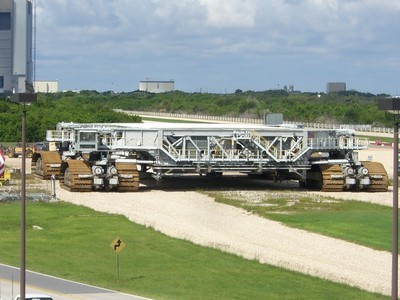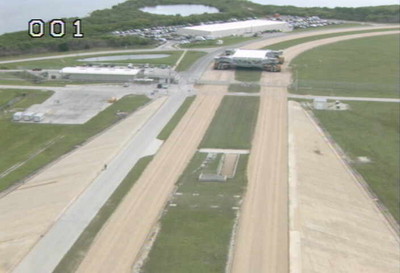
OK, I have to admit this is totally off-topic for the time being. But as I said: this blog is probably not only about the space shuttle, but space launches (and me viewing them ;)) in general. As such, I’d like to stuff in some notes on the Ares rockets right now (after 2012 it’s probably more interesting, but anyhow…).
When I visited the NASA home page to pick up news about Discovery, I was dragged in by a page about the ares rockets and, more precisely, the escape system that astronauts use when things go wrong. Of course, all of this is just a model, not real hardware. That escape system is based on a roller coaster. Just read what NASA says:
As NASA revamps Launch Complex 39B to host the new Orion spacecraft and Ares I rocket of the Constellation Program, engineers are preparing to install a new kind of departure system to evacuate astronauts.
The agency calls it the Orion Emergency Egress System, but it is fundamentally a group of multi-passenger cars on a set of rails reminiscent of a roller coaster. Its purpose is to move astronauts and ground crew quickly from the vehicle entry on the launch pad to a protective concrete bunker in case of an emergency.
The emergency egress system for Ares will carry astronauts and ground crew.
Similar systems have been built into launch pads since the Saturn rockets and for the space shuttle. Both earlier systems were cables running from the spacecraft’s crew ingress level to an area near a bunker. There has never been an emergency on the pad that required the crew use these systems.
For Orion, the rail car would stand some 380 feet above the ground. It will be at the same height as the hatch on the Orion capsule, which is where the astronaut crews enter the spacecraft before launch.
Kelli Maloney, the lead designer for the launch pad escape system, said a trade study showed the railcar best met NASA’s requirements. Those requirements call for astronauts to be able to get out of the spacecraft and into the bunker within 4 minutes.
One of the benefits of the rail system, Maloney said, is that the track can take the astronauts directly to the bunker door. That would be a big help if one of the crew members or a ground crew member was incapacitated.
Scott Colloredo, NASA’s senior project integrator for Constellation ground systems, said the group called on the world’s roller coaster designers for help with the concept.
“It’s obviously not a thrill ride, but we’re taking advantage of technology that’s there,” he said.
I just hope that rollercoaster is never to be used in practice…
Source: http://www.nasa.gov/mission_pages/constellation/main/railcarevac.html




